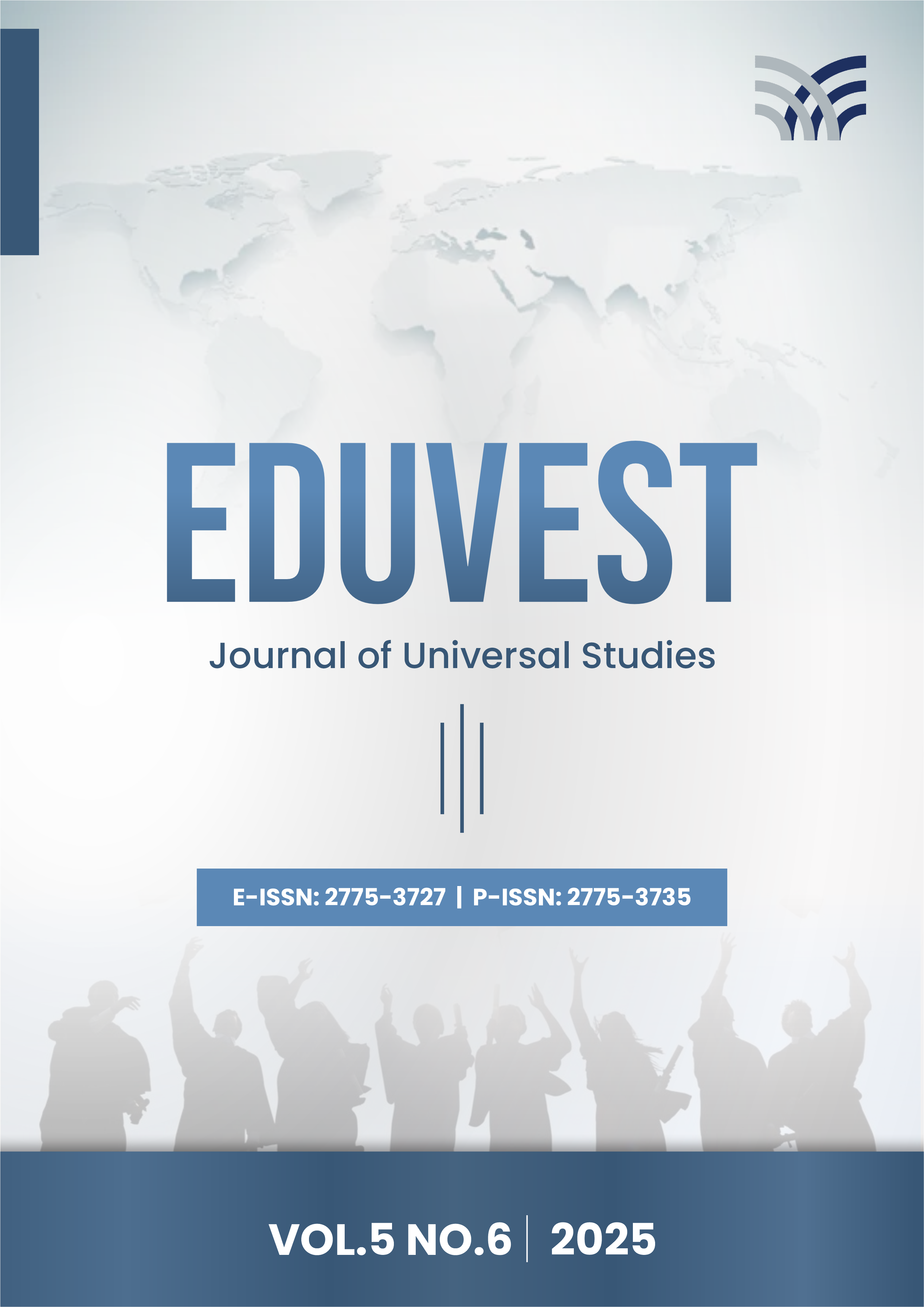The Role of STOPE Framework in the Effectiveness of E-Catalog at the Ministry of Public Works and Public Housing
##semicolon##
https://doi.org/10.59188/eduvest.v5i6.51355##semicolon##
sectoral e-catalogue##common.commaListSeparator## procurement of goods and services##common.commaListSeparator## STOPE##common.commaListSeparator## effectivenessAbstrakt
The implementation of sectoral e-catalogs is a crucial part of government procurement reform, aiming to enhance transparency, accountability, and efficiency. However, its effectiveness still encounters several challenges in practice. Understanding the influencing factors is essential for optimizing the system.. This study adopts a quantitative approach using a survey method. The respondents are employees of the Ministry of Public Works and Public Housing who are directly involved in the management and use of sectoral e-catalogs. The data were analyzed using Partial Least Squares Structural Equation Modeling (PLS-SEM) with the STOPE (Strategy, Technology, Organization, People, Environment) framework as the theoretical basis. The findings reveal that strategic, technological, organizational, and people-related factors have a positive and significant effect on the effectiveness of sectoral e-catalog implementation. In contrast, environmental factors did not show a significant impact. The results highlight the importance of strengthening internal capacity and alignment across strategic, technological, organizational, and human resource dimensions to improve e-catalog performance. These insights are valuable for developing more adaptive and responsive electronic procurement policies in the public sector.
##submission.citations##
Afolabi, A., Ibem, E., Aduwo, E., Tunji-Olayeni, P., & Oluwunmi, O. (2019). Critical success factors (CSFs) for e-procurement adoption in the Nigerian construction industry. Buildings, 9(2). https://doi.org/10.3390/buildings9020047
Alim (Kementerian Keuangan), S., & Akhmadi (Politeknik Keuangan Negara STAN), M. H. (2021). Analisis Faktor Yang Memengaruhi Kinerja Pengadaan Barang/Jasa Dalam Keadaan Darurat Wabah Covid-19 Dengan Social Distancing Sebagai Variabel Moderator. Jurnal Manajemen Industri Dan Logistik, 5(1), 19–30. https://doi.org/10.30988/jmil.v5i1.552
Al-Osaimi, K., Alheraish, A., & Bakry, S. H. (2008). STOPE-based approach for e-readiness assessment case studies. 2International Journal of Network Management, 18(1), 65–75. https://doi.org/https://doi.org/10.1002/nem.657
Bougie, R., & Sekaran, U. (2020). Research Methods for Business: A Skill-Building Approach (Eighth Edi). John Wiley & Sons, Inc.
Choi, H., Park, M. J., Rho, J. J., & Zo, H. (2016). Rethinking the assessment of e-government implementation in developing countries from the perspective of the design–reality gap: Applications in the Indonesian e-procurement system. Telecommunications Policy, 40(7), 644–660. https://doi.org/10.1016/j.telpol.2016.03.002
Duncan, R. B. (1973). Multiple Decision-Making Structures in Adapting to Environmental Uncertainty: The Impact on Organizational Effectiveness. Human Relations, 26(3), 273–291.
Haryono, H. (2022). E-Procurement and effectiveness of government goods and services procurement: case study in Singkawang, the province of west Kalimantan, Indonesia. JPPI (Jurnal Penelitian Pendidikan Indonesia), 8(2), 359. https://doi.org/10.29210/020221546
Issah, Ofori; David, Ackah; Boafo Eric, D. (2024). View of Analyzing the influence of organizational culture and top management orientation on the relationship between e-procurement and firms’ performance: a contingency factors perspective. Project Management and Scientific Journal, 7(9), 93–116.
Jama, E. M., Mwanza, B. G., & Mwanaumo, E. M. (2024). Strategies for E-Procurement Adoption by Small and Medium-sized Enterprises: Insights from South Sudan. African Journal of Commercial Studies, 4(3), 207–224. https://doi.org/10.59413/ajocs/v4.i3.5
Jannah, G. N. M., & Widiyarta, A. (2023). Efektivitas Penggunaan E-Procurement Dari Sudut Pandang Penyedia Pada Pt. Jatim Prasarana Utama. Journal Publicuho, 6(4), 1447–1455. https://doi.org/10.35817/publicuho.v6i4.290
Luo, G., Serrão, C., Liang, D., & Zhou, Y. (2023). A Relevance-Based Technology–Organisation–Environment Model of Critical Success Factors for Digital Procurement Adoption in Chinese Construction Companies. Sustainability (Switzerland), 15(16). https://doi.org/10.3390/su151612260
Mahuwi, L., & Israel, B. (2024). Promoting transparency and accountability towards anti-corruption in pharmaceutical procurement system: does e-procurement play a significant role? Management Matters. https://doi.org/10.1108/MANM-07-2023-0027
Mohungoo, I., Brown, I., & Kabanda, S. (2020). A Systematic Review of Implementation Challenges in Public E-Procurement. In Lecture Notes in Computer Science (including subseries Lecture Notes in Artificial Intelligence and Lecture Notes in Bioinformatics): Vol. 12067 LNCS. Springer International Publishing. https://doi.org/10.1007/978-3-030-45002-1_5
Nani, D. A., & Ali, S. (2020). Determinants of Effective E-Procurement System: Empirical Evidence from Indonesian Local Governments. Jurnal Dinamika Akuntansi Dan Bisnis, 7(1), 33–50. https://doi.org/10.24815/jdab.v7i1.15671
Ofori, D., & Fuseini, O. I. (2020). Electronic Government Procurement Adoption in Ghana: Critical Success Factors. Advances in Research, 21(3), 18–34. https://doi.org/10.9734/air/2020/v21i330191
Osir, E. O. (2016). Role of e-procurement adoption on procurement performance in state corporations in Kenya: A case of Kenya Utalii College. International Academic Journal of Procurement and ….
Prasetyo, A. (2019). Critical Success Factors of Electronic Procurement Implementation in The Ministry of National Development Planning/Bappenas Republic of Indonesia. Jurnal Perencanaan Pembangunan: The Indonesian Journal of Development Planning, 3(1), 122–142. https://doi.org/10.36574/jpp.v3i1.60
##submission.downloads##
Publikované
##submission.howToCite##
Číslo
Sekcia
##submission.license##
##submission.copyrightStatement##
##submission.license.cc.by-sa4.footer##










